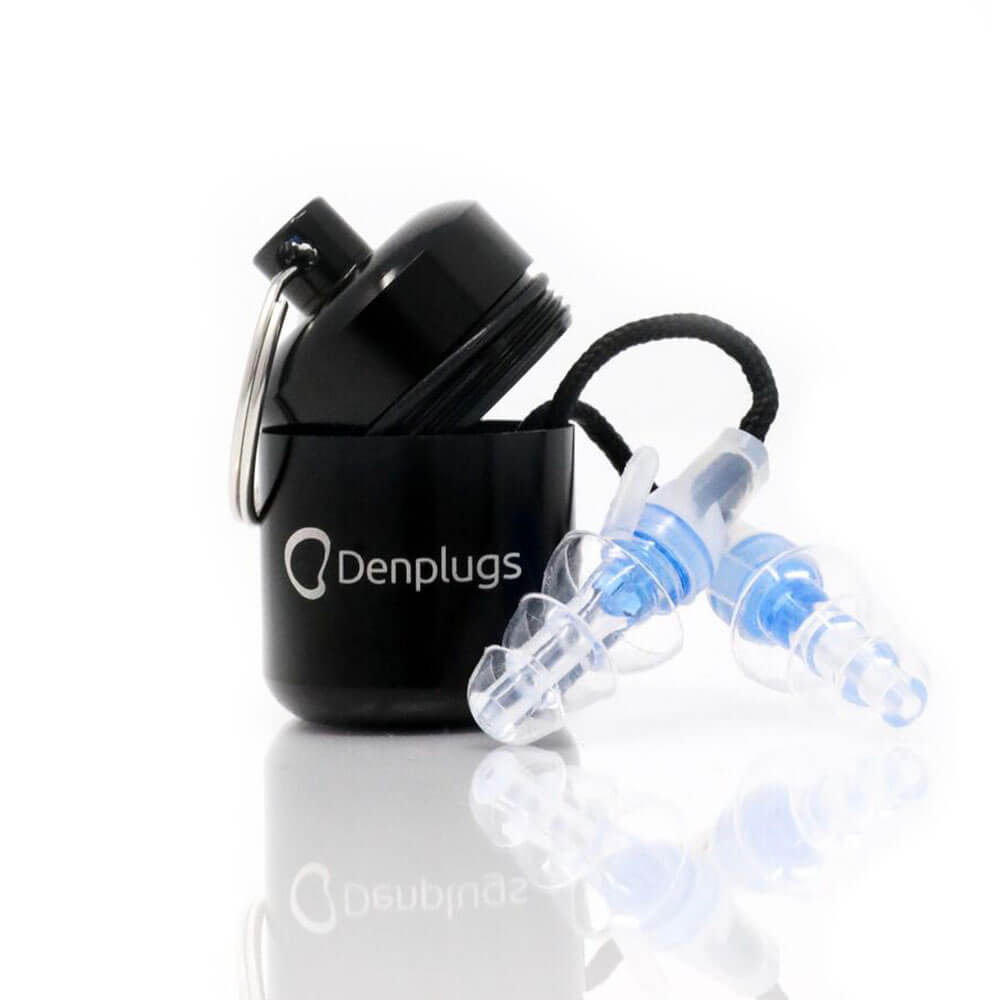Table of Contents
In response to the escalating concern surrounding the potential hazards of prolonged exposure to high-frequency noise in dental practices, there is a growing emphasis on finding effective solutions to protect the hearing health of dentists. The use of various instruments in dentistry, such as high-speed handpieces and suction units, exposes dental professionals to noise levels that often surpass recommended safety thresholds. Understanding the critical need for hearing protection and exploring viable solutions has become paramount in the pursuit of long-term well-being for dentists.
The Imperative Need for Hearing Protection in Dentistry: Unmasking the Decibel Dangers
Dentists, as guardians of oral health, find themselves unwittingly exposed to an often-overlooked occupational hazard – the insidious threat of excessive noise. In the realm of dentistry, where precision meets technology, the auditory environment can be unexpectedly perilous. The urgency for hearing protection arises from the pervasive nature of noise levels that routinely breach established safety thresholds.
Decoding the Decibel Dilemma:
To comprehend the gravity of the situation, it’s essential to recognize that the baseline threshold for safe noise exposure is set at 85 decibels. This benchmark, established by occupational standards, serves as the sonic safety net for professionals across various fields. However, the dental domain, with its arsenal of tools and equipment, propels decibel levels far beyond this safety cut-off.
High-Speed Handpiece: The Decibel Dynamo
At the heart of dental procedures lies the high-speed handpiece, a fundamental tool revered for its precision and efficiency. Alas, this indispensable device doubles as a formidable source of auditory peril. Studies have consistently shown that the noise emanating from the high-speed handpiece can soar to alarming heights, often exceeding 100 decibels. This sonic barrage poses a substantial threat to the delicate auditory faculties of dentists, who, in their pursuit of clinical excellence, unwittingly subject themselves to an auditory onslaught.

Echoes of Amplification: Sandblasters and Suction Units
The high-speed handpiece, while a major contributor, is not the sole culprit in this symphony of sound. Other instruments, such as sandblasters and suction units, wield their own acoustic influence, further contributing to the crescendo of noise within dental practices. The amalgamation of these devices creates an auditory landscape where the decibel levels can reverberate well above the established safety norms, setting the stage for potential auditory distress.
Understanding the Profound Impact of Noise on Dentists’ Hearing: A Sound Exploration
Delving into the depths of auditory research, a symphony of studies has underscored the profound impact of consistent exposure to high noise levels on the auditory well-being of dental professionals. The amalgamation of various instruments, with the high-speed handpiece taking center stage, has been scrutinized to reveal a sobering reality – the prevalence of hearing loss and other auditory issues among dentists.
- Unveiling the Research Findings: As the dental community grapples with the repercussions of occupational noise, studies have emerged as poignant markers of the potential risks faced by dentists.
- High-Speed Handpiece: An Acoustic Adversary. Research endeavors have systematically measured the noise generated by the high-speed handpiece, revealing a disconcerting truth. The decibel levels emanating from this quintessential dental tool often breach safety thresholds, presenting a significant risk to the auditory health of dental professionals. These findings underscore the critical need for targeted hearing protection solutions in the dental workspace.
- A Symphony of Auditory Distress:The auditory landscape within dental practices, shaped by a cacophony of instruments, has been mapped through extensive studies. These investigations illuminate the prevalence of hearing loss and auditory distress among dentists, establishing a direct correlation between occupational noise exposure and compromised auditory well-being.
Motivation for Dentists: Proactive Hearing Protection
A. Long-Term Well-Being:
- Prioritizing hearing protection is not just a professional responsibility but a proactive step towards ensuring long-term well-being. Custom earplugs offer a tailored and effective solution that goes beyond merely meeting occupational safety standards.
B. Optimal Communication:
- The ability to communicate clearly with patients during dental procedures is of paramount importance. Custom earplugs strike the perfect balance, providing necessary noise reduction while allowing for effective communication.
C. Comprehensive Protection:
- Dentists often engage in activities outside the dental practice, such as attending concerts, shooting sports, or riding motorcycles. Custom earplugs with adjustable filters offer comprehensive protection, adapting to the varying noise levels encountered in both professional and personal settings.
Selecting Optimal Hearing Protection for Dental Practitioners
As the dental community grapples with the imperative need for hearing protection, the quest for optimal solutions gains momentum. Choosing the right hearing protection becomes a crucial aspect of preserving auditory well-being amidst the sonic challenges of dental practices. Here, we explore specific models and brands of earplugs and earmuffs tailored to meet the unique demands of dental professionals.
- Westone Custom Earplugs:
- Features: These custom earplugs offer a personalized fit, molded to the unique contours of the wearer’s ears. With interchangeable filters providing various decibel reduction options, they are suitable for different work environments.
- Benefits: Comfortable for extended wear, Westone custom earplugs effectively reduce noise levels, especially from high-speed handpieces, without compromising communication with patients.
- Etymotic Research Custom Earplugs:
- Features: Etymotic Research specializes in high-fidelity hearing protection. Their custom earplugs offer precision noise reduction, allowing dental professionals to maintain situational awareness while mitigating the impact of high decibel levels.
- Benefits: The custom-fit design ensures a secure and comfortable seal, effectively attenuating noise without distorting the sounds critical for effective communication in the dental setting.
- 3M E-A-R Classic Earplugs:
- Features: These foam earplugs provide a simple yet effective solution for noise reduction. They are easy to insert and remove, making them convenient for daily use in the dental setting
- Benefits: While not custom-fit, 3M E-A-R Classic earplugs offer a cost-effective and readily available option for dental practitioners seeking immediate hearing protection.
- Mack’s Pillow Soft Silicone Earplugs:
- Features: Moldable and reusable, Mack’s silicone earplugs conform to the shape of the ear canal, providing a comfortable and customizable fit. They offer moderate noise reduction suitable for the dental office environment.
- Benefits: Affordability and ease of use make Mack’s Pillow Soft earplugs a convenient choice for dentists seeking a disposable yet effective hearing protection solution.
Why Dentists Might Consider Opting for Custom Earplugs?
As dentists navigate the intricate world of dental procedures and patient care, one crucial aspect often takes a back seat—protecting their own hearing. The incessant noise generated by dental tools, particularly the high-speed handpiece, has been a longstanding concern, with potential repercussions for auditory health. In light of this, a closer look at the advantages of custom earplugs becomes not just beneficial but imperative for dentists looking to safeguard their hearing amidst the daily bustle of their practice. Let’s explore the reasons why custom earplugs stand out as a noteworthy solution for hearing protection in the dental profession.
1. Comfortable Design:
- Custom earplugs, being uniquely molded to the wearer’s ear shape, provide unparalleled comfort during prolonged use. This is particularly vital for dentists engaged in lengthy dental procedures.
2. Adjustable Filters:
- Many custom earplugs are equipped with interchangeable filters, offering dentists the flexibility to tailor the level of noise reduction based on their specific requirements. This adaptability is crucial for maintaining effective communication with patients while mitigating exposure to harmful noise.
3. Versatility:
- Dentists can choose from various decibel reduction options, such as 9, 15, or 25 decibels, depending on the specific demands of their work environment. This versatility ensures that the earplugs can be customized to suit the varying noise levels encountered in different aspects of dental practice.
4. Durability:
- Designed to withstand the rigors of dental practice, custom earplugs offer durability and longevity, ensuring reliable hearing protection over time.
5. Reduced Fatigue:
- Dentists who integrate custom earplugs into their daily routine report reduced fatigue, especially after engaging in loud activities outside of the dental setting, such as motorcycle riding or participating in shooting sports.
In the pursuit of preserving auditory health, dental professionals are presented with a diverse array of hearing protection options. Whether opting for custom earplugs, electronic earmuffs, or over-the-counter alternatives, the key lies in selecting a solution that aligns with the specific demands of the dental workspace. By integrating these sound solutions into their daily practice, dentists can proactively mitigate the auditory risks associated with their profession, ensuring a harmonious balance between clinical precision and hearing well-being.
